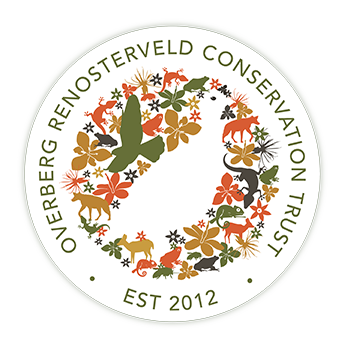History
The Overberg Renosterveld Conservation Trust was established in 2012, by the current Director, because although the dire status of renosterveld was recognised by national government, very little focused efforts to secure the last remnants for conservation were in place. From a floral perspective, lowland renosterveld is amongst the richest (if not, the richest) of Mediterranean habitats on the planet. Sadly, it is also one of the most threatened habitats on Earth, with over 95% having been converted for agriculture (crops and planted pastures). The remaining remnants are essentially all found on privately-owned land, thus working with commercial farmers in the ‘wheat-belt’ is crucial to the survival of this special ecosystem and all the life which depends upon it.
The ORCT focuses on building relationships with landowners which ultimately result in the highest level of commitment: A conservation servitude registered on the farm in perpetuity. In return for this significant commitment from the landowner, the ORCT assists with the management and restoration of the renosterveld on the property. To date, the Trust has signed 21 easements totalling 4500 ha of renosterveld. The Trust is also involved with facilitating key land purchase priorities for the largest and most connected remnants, where viable.
